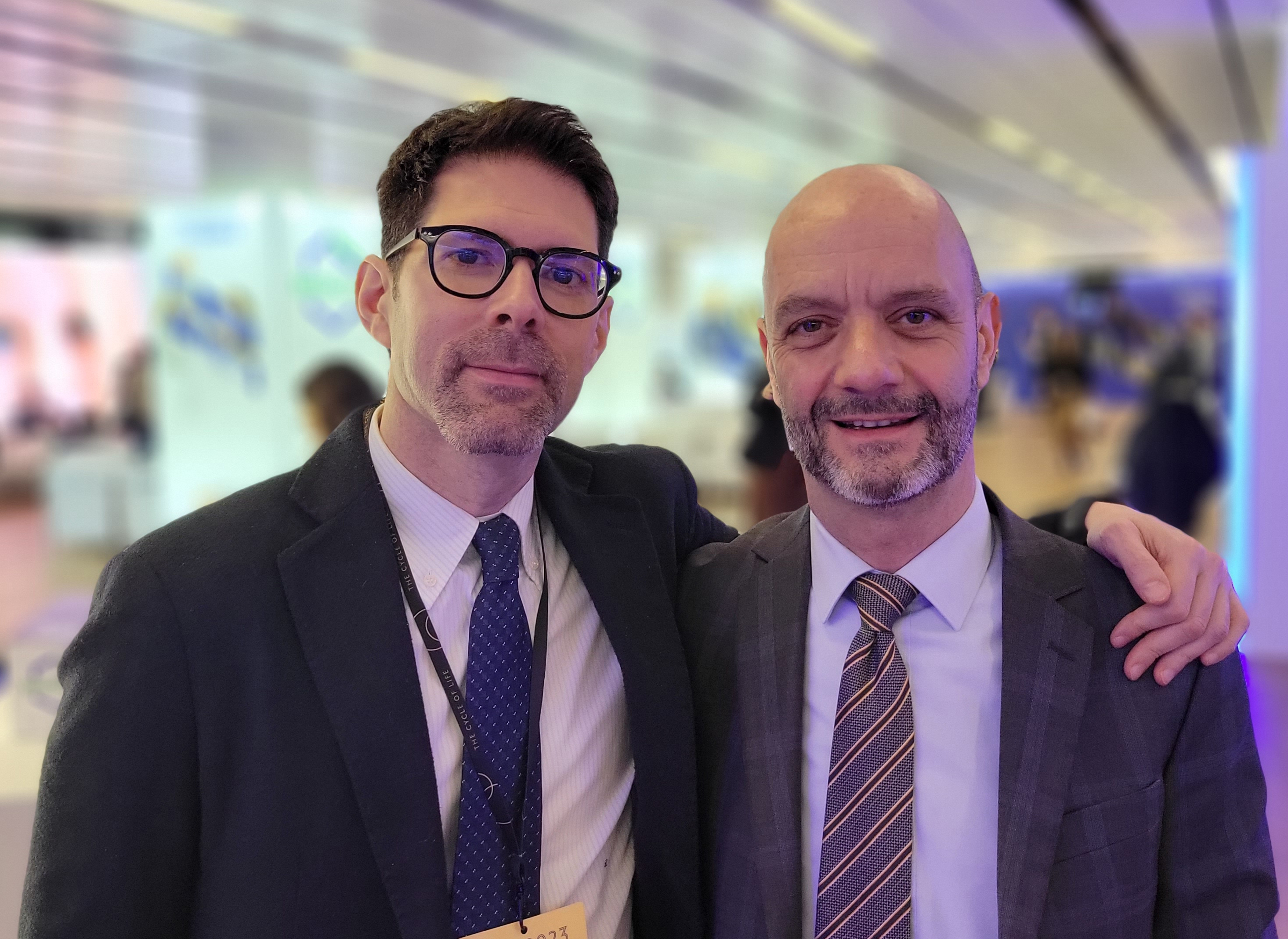Bracco Imaging Sees Growth in MRI, Ultrasound Contrast Segments

VIENNA, AUSTRIA - X-ray contrast may be radiology’s bread and butter, but Italian contrast developer Bracco Imaging also sees growth in ultrasound and MRI contrast. Bracco executives discussed the company’s strategy in these modalities in an interview at the European Congress of Radiology (ECR), held March 1-5.
In ultrasound, Bracco’s portfolio is led by SonoVue, a microbubble contrast agent that’s been on the market in Europe since 2001 and sold in 36 countries. By boosting the echogenicity of blood, SonoVue improves signal-to-noise ratio, leading to higher-quality images.
At ECR 2023, Bracco highlighted the agent’s utility for focal liver lesions, 1 of the 5 clinical indications the company has for the product in Europe. It’s also working with scanner manufacturers, such as Siemens Healthineers and Mindray, to promote increased use of ultrasound contrast, which is only used in 3% to 5% of ultrasound procedures globally, according to Luca Frazzoli (pictured left), global modality director for ultrasound global marketing at Bracco.
Bracco sees manufacturers as one leg of a triangle that includes contrast companies and academic institutions that are necessary to promote greater use of ultrasound contrast, in particular through steps like training radiologists and other personnel to use the products.
“The reason we are partnering with so many equipment manufacturers is because we believe the more we jointly run these trainings …[the more] we could move the needle” of contrast utilization, Frazzoli told Applied Radiology.
Frazzoli noted differences between how ultrasound contrast is used in Europe vs the US. Liver imaging tends to be the mostly widely used application in Europe, while echocardiography is Bracco’s biggest application in the US. Unlike in Europe, Bracco does not have approval to market SonoVue for breast and vascular applications.
The company sees geographic expansion as a promising area for SonoVue, particularly in the Asia-Pacific region, where it sees the potential for growth in China, Japan, and Korea. Ultrasound contrast use in particular is surging in China, Frazzoli said.
Big changes are also happening in MRI contrast. Gadopiclenol, a new high-relaxivity contrast agent, has been approved and launched in the US. The product, co-developed by Bracco and Guerbet, is under EMA evaluation in Europe, and approval could be sometime this year, according to Thilo Schneider (pictured right), global modality director for MRI global marketing.
The high-relaxivity/potency of gadopiclenol has been used to develop clinical studies to support gadopiclenol’s regulatory submissions, showing that it can be used at half the dose of conventional gadolinium-based contrast agents (GBCAs) to achieve the same (or better) image quality as a currently used contrast agent. This helps address multiple issues around gadolinium, such as patient exposure (ie, the ALARA – as low as reasonably achievable – principle) or significant reduction of gadolinium emission into the environment as patients excrete gadolinium following scans.
Besides just supporting reduced use of gadolinium, gadopiclenol could open up new applications such as with abbreviated scanning protocols or the use of artificial intelligence (AI) software to reconstruct data from contrast-enhanced images.
“It’s not just new products coming to market,” Schneider said. “There is a lot going on with improved protocols and AI solutions aiming to facilitate or streamline workstreams.”
Once gadopiclenol hits the European market, Schneider sees the agent possibly occupying a premium position in Bracco’s product portfolio, while the established MRI contrast agents may face some commoditization.
After many years without a new contrast agent in the MRI market, gadopiclenol is the first gadolinium-based, high-potent contrast agent hitting the market.
Other high-relaxivity GBCAs are in clinical development by Bracco and Bayer, and GE has mentioned early clinical activities on a manganese-based contrast agent.
“It’s not just about having wonderful new products … but it’s also about embedding them into improved solutions for our customers, meaning the doctors, the medical societies, and in the end, the patient,” Schneider said.